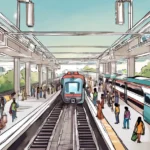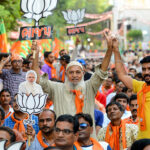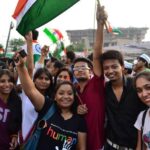The Heartland’s Election Extravaganza
In Uttar Pradesh (UP), election campaigns are more than just a political exercise—they are a spectacle. From grandiose rallies to digital blitzkriegs, political parties leave no stone unturned in capturing voter attention. But beneath the lights and theatrics lies a critical question: Are these campaigns rooted in meaningful policy discussions, or are they elaborate shows designed to sway emotions and solidify loyalties?
Key Metrics
- Campaign Budgets (2022 Assembly Elections): Estimated at over ₹1,000 crore across major parties. (Election Commission of India)
- Voter Demographics:
- Youth (18–34): 32%
- Women: 48.04%
- Dalits: 21.1%
- Muslims: 19.26% (Census 2011)
- Digital Penetration: Over 45 million smartphone users in UP drive social media campaigns. (Telecom Regulatory Authority of India, 2023)
The Spectacle: Flashy Tactics, Emotional Appeals
1. Mega Rallies and Roadshows
Political leaders stage rallies that resemble festivals, complete with fireworks, music, and crowds drawn from across the state.
- Objective: To demonstrate strength and mobilize party cadres.
- Reality: Often criticized for focusing more on optics than on meaningful dialogue about pressing issues.
2. Social Media Wars
Digital platforms have become the new battleground, with parties employing hashtags, memes, and videos to capture the imagination of younger voters.
- Example: BJP’s hashtag campaigns like #SabkaVikas and SP’s #DeshKaNetaAkhilesh.
- Criticism: Despite their reach, these campaigns are often accused of being high on rhetoric and low on substance.
3. Celebrity Endorsements
From actors to sports stars, celebrities often feature in campaign ads, blurring the line between entertainment and politics.
The Substance: Policy Promises and Ground Realities
1. Development and Welfare
- BJP: Highlights infrastructure achievements like expressways, airports, and the Kashi Vishwanath Corridor, along with welfare schemes like PM Awas Yojana and Mission Shakti.
- SP: Promises urban-rural connectivity and a focus on education and healthcare reforms.
- Reality Check: While welfare programs have broad reach, regional disparities and implementation challenges persist.
2. Employment and Economy
- Narratives:
- BJP emphasizes skill development and industrial corridors.
- SP targets unemployment rates, claiming BJP policies have failed the youth.
- Ground Reality: Unemployment remains a pressing concern, with rural areas bearing the brunt.
3. Caste and Religion
Caste and religious identities continue to be central themes.
- Strategies:
- BJP’s Hindutva narrative and non-Yadav OBC outreach.
- SP’s focus on Yadav-Muslim unity.
- Criticism: While identity politics resonates, it often sidelines broader socio-economic issues.
What Drives Spectacle Over Substance?
1. Voter Psychology
Campaigns often exploit emotional connections and identity markers to create a sense of belonging and loyalty.
2. Media Amplification
Mainstream and social media thrive on sensationalism, amplifying the most theatrical aspects of campaigns.
3. Lack of Accountability
Vague promises and populist rhetoric dominate, as voters lack mechanisms to hold parties accountable for unfulfilled commitments.
Can Campaigns Be Meaningful?
1. Emphasize Policy Over Optics
Political campaigns must prioritize discussions on education, healthcare, and employment instead of merely showcasing symbolic achievements.
2. Engage Grassroots Voices
Incorporating local issues and perspectives can make campaigns more relevant to voters’ needs.
3. Fact-Based Narratives
Parties should use data to back their claims and highlight measurable impacts of their policies.
4. Digital Literacy
Educating voters on critically evaluating digital content can reduce the influence of misinformation.
Conclusion
UP’s political campaigns are a mix of spectacle and substance, where flashy tactics often overshadow meaningful policy discussions. While grand rallies and digital campaigns capture attention, the real challenge lies in addressing voters’ pressing concerns.
For campaigns to move beyond theatrics, political leaders must embrace authenticity, focus on actionable policies, and foster a deeper connection with their electorate. Only then can UP’s political landscape evolve from a spectacle-driven narrative to a more informed and substantive democratic exercise.












